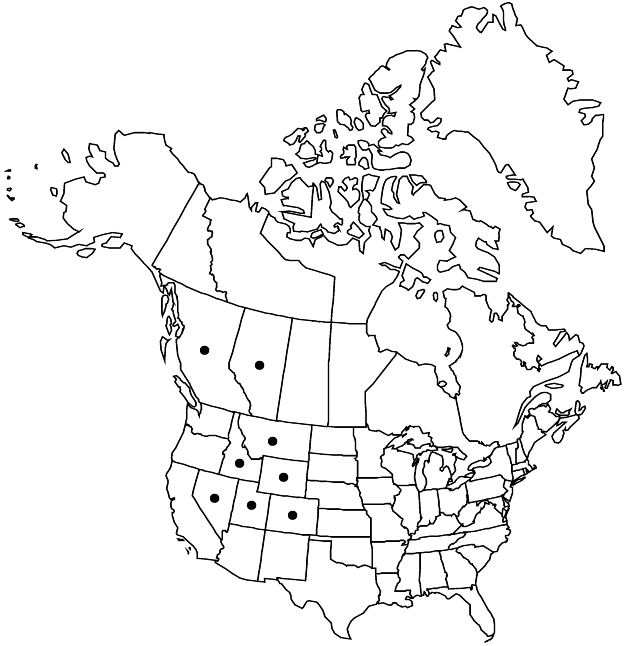Difference between revisions of "Potentilla hookeriana"
Index Seminum (Hamburg) 1849: 10. 1849.
FNA>Volume Importer |
imported>Volume Importer |
||
| (6 intermediate revisions by 2 users not shown) | |||
| Line 16: | Line 16: | ||
|name=Potentilla nivea subsp. hookeriana | |name=Potentilla nivea subsp. hookeriana | ||
|authority=(Lehmann) Hiitonen | |authority=(Lehmann) Hiitonen | ||
| − | }}{{Treatment/ID/Synonym | + | |rank=subspecies |
| + | }} {{Treatment/ID/Synonym | ||
|name=P. nivea var. hookeriana | |name=P. nivea var. hookeriana | ||
|authority=(Lehmann) Th. Wolf | |authority=(Lehmann) Th. Wolf | ||
| + | |rank=variety | ||
}} | }} | ||
|hierarchy=Rosaceae;Rosaceae subfam. Rosoideae;Rosaceae tribe Potentilleae;Potentilla;Potentilla sect. Rubricaules;Potentilla hookeriana | |hierarchy=Rosaceae;Rosaceae subfam. Rosoideae;Rosaceae tribe Potentilleae;Potentilla;Potentilla sect. Rubricaules;Potentilla hookeriana | ||
| Line 34: | Line 36: | ||
|elevation=1400–3900 m | |elevation=1400–3900 m | ||
|distribution=Alta.;B.C.;Colo.;Idaho;Mont.;Nev.;Utah;Wyo. | |distribution=Alta.;B.C.;Colo.;Idaho;Mont.;Nev.;Utah;Wyo. | ||
| − | |discussion=<p>As here defined, Potentilla hookeriana consists of primarily alpine plants from the Rocky Mountains and adjacent desert mountains that share many of the same characters with P. rubricaulis but are smaller overall. Arctic plants previously included in P. hookeriana are now assigned to P. arenosa (J. Soják 1986; B. Ertter et al. 2013).</p> | + | |discussion=<p>As here defined, <i>Potentilla hookeriana</i> consists of primarily alpine plants from the Rocky Mountains and adjacent desert mountains that share many of the same characters with <i>P. rubricaulis</i> but are smaller overall. Arctic plants previously included in <i>P. hookeriana</i> are now assigned to <i>P. arenosa</i> (J. Soják 1986; B. Ertter et al. 2013).</p> |
|tables= | |tables= | ||
|references= | |references= | ||
| Line 43: | Line 45: | ||
-->{{#Taxon: | -->{{#Taxon: | ||
name=Potentilla hookeriana | name=Potentilla hookeriana | ||
| − | |||
|authority=Lehmann | |authority=Lehmann | ||
|rank=species | |rank=species | ||
| Line 58: | Line 59: | ||
|publication year=1849 | |publication year=1849 | ||
|special status=Endemic | |special status=Endemic | ||
| − | |source xml=https:// | + | |source xml=https://bitbucket.org/aafc-mbb/fna-data-curation/src/2e0870ddd59836b60bcf96646a41e87ea5a5943a/coarse_grained_fna_xml/V9/V9_313.xml |
|subfamily=Rosaceae subfam. Rosoideae | |subfamily=Rosaceae subfam. Rosoideae | ||
|tribe=Rosaceae tribe Potentilleae | |tribe=Rosaceae tribe Potentilleae | ||
Latest revision as of 22:55, 5 November 2020
Caudex branches not sheathed with marcescent whole leaves. Stems ascending to nearly erect, (0.3–)0.5–2 dm. Basal leaves usually both ternate and palmate on same plant, rarely subpalmate, 1–9 cm; petiole 0.5–6 cm, long hairs common to abundant, ± appressed to ascending-spreading, (0.5–)1–1.5(–2) mm, usually stiff, rarely weak, verrucose, short-crisped hairs sparse to common, cottony hairs absent, glands ± sparse; leaflets 3–5, proximalmost separated by 0(–1) mm, central oblanceolate to obovate, 0.5–2.5 × 0.4–1.2 cm, petiolules 0–1 mm, distal ± 3/4 of margin incised 1/2–3/4, rarely +, to midvein, teeth 2–6 per side, 1–5 mm, apical tufts 0.5–1 mm, abaxial surfaces grayish white to white, long hairs common to abundant, cottony-crisped hairs usually dense, short hairs and glands absent or obscured, adaxial green to grayish green, long hairs sparse to common, 0.5–1.5 mm, usually stiff, short and/or crisped hairs sparse to common, cottony hairs absent, glands sparse to common. Cauline leaves 1–2. Inflorescences 1–6(–8)-flowered, open, branch angle 20–50°. Pedicels (0.5–)1–2 cm, proximal to 3 cm. Flowers: epicalyx bractlets linear to oblong-lanceolate, 2–3 × 0.7–1.3 mm; hypanthium 3–4 mm diam.; sepals 3–5 mm, apex subacute, glands ± common, not obscured; petals yellow, ± overlapping, 3–6(–7) × 4–5 mm, usually longer than sepals; filaments 0.5–1.5 mm, anthers 0.3–0.5 mm; carpels 30–50, styles 0.8–1.2 mm. Achenes 1–1.3 mm.
Phenology: Flowering (spring–)summer.
Habitat: Alpine ridges, fellfields, scree slopes, rocky canyons
Elevation: 1400–3900 m
Distribution

Alta., B.C., Colo., Idaho, Mont., Nev., Utah, Wyo.
Discussion
As here defined, Potentilla hookeriana consists of primarily alpine plants from the Rocky Mountains and adjacent desert mountains that share many of the same characters with P. rubricaulis but are smaller overall. Arctic plants previously included in P. hookeriana are now assigned to P. arenosa (J. Soják 1986; B. Ertter et al. 2013).
Selected References
None.